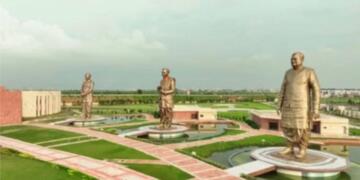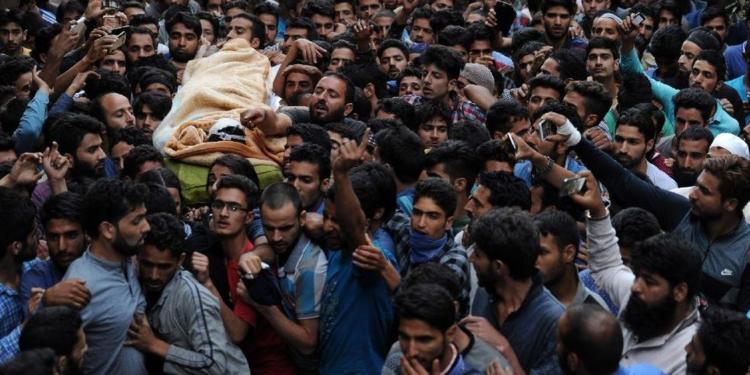Over the past few years, combined efforts of the security forces and the coherent, cohesive policy of the government have led to huge progress towards freeing the valley of radical elements. Now, taking the efforts further, the Indian Government is considering a new process under which funeral will be undertaken ‘in camera’, with only close family members in attendance. The funeral would be done according to Islamic rituals.
“The idea is to hand over the body to the family and then hold the burial in front of the local magistrate. Section 144 will be strictly imposed, and no one else will be allowed to attend. Also, the entire event would be filmed,” a source in the security establishment told ThePrint.
Over the past few years, these public funeral processions have become a fertile recruitment ground for radicals elements, who use the emotionally charged environment to lure gullible youth into terrorism which is given an outside facade of a ‘freedom struggle’.
This trend of using ‘Janajas’ (funeral processions) of terrorists as recruitment ground has been on the rise since the security forces in Kashmir had neutralized Hizbul Mujahideen commander Burhan Wani on 8 July 2016. The encounter of Hizbul Commander triggered massive protests in the region. Terror recruiters used his death and glorified it as ‘martyrdom’ to further their agenda of recruitment.
This step is sure to further aid the ongoing efforts of the Modi administration against the terror infrastructure built by the separatist forces over past decades. As part of its plan to deal with the security situation in Kashmir, the Narendra Modi government has followed a two-pronged strategy to deal with the separatist forces. The first part of the strategy was to discard the false notion that the Hurriyat commands great influence over the Kashmiri society and is perhaps the real stakeholder in the ever-burning Kashmir issue. The second part mainly included efforts to curb terror activities in the region through a systematic crackdown on terror modules and Terror Financing. A number of terrorists have been also neutralized in this phase.
Local separatist forces that have been using the deaths of these terrorists to further their extremist and radical agenda are poised to be adversely impacted by this move. In 2017 security forces faced 1,261 incidents of stone pelting in Jammu and Kashmir, against 2,808 incidents in 2016 and 730 in 2015. There was a sharp rise in stone pelting in 2016 after the death of Burhan Wani at the hands of the security forces. In July 2018, the then police chief S P Vaid said that the number of stone pelting incidents have dropped by about 90 percent. The consistent reduction in incidents since 2017 could be owed to a number of factors, one of them being demonetization and the other being the Enforcement Directorate and NIA’s crackdown on separatists in Kashmir and their links with Pakistan. The incidents of stone-pelting are also sure further decline with this step.
Ultimately Modi government has been putting in efforts to combat the situation in Kashmir in a holistic way, which includes constant attempts to amalgamate the Kashmiri society with the mainstream Indian society and to fight the radical terrorism with an iron hand. Firm resolve of the Indian government to address terrorism in Kashmir is surely bearing fruits and this move to further cut off any opportunity for terror recruiters is surely a positive development.































